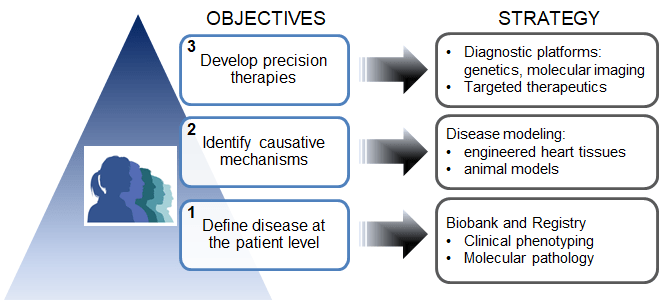
The CPRi will focus on both heart failure and coronary artery disease. Through the expansion of our heart tissue and blood biobank and an university wide registry from patients with heart failure, we now have the availability to study the genetic abnormalities and inflammatory responses that are increasingly being identified in patients with each of these diseases. This will assist in defining disease at the patient level and to define new subtypes of heart failure and coronary artery disease.
The identification of causative mechanisms in both pathologies is important to us, as this will inform how we model the disease using engineered heart tissues and various animal models. Both of these models will drive the research happening at the basic science and translational levels and will assist in progressing the clinical application of these findings.
Ultimately, the goals of CPRi are to define new subtypes of heart failure and coronary artery disease that can be identified by genetic and molecular testing and clinical imaging, define causative mechanisms, and utilize a novel approach to drug discovery to develop precision therapeutics.
